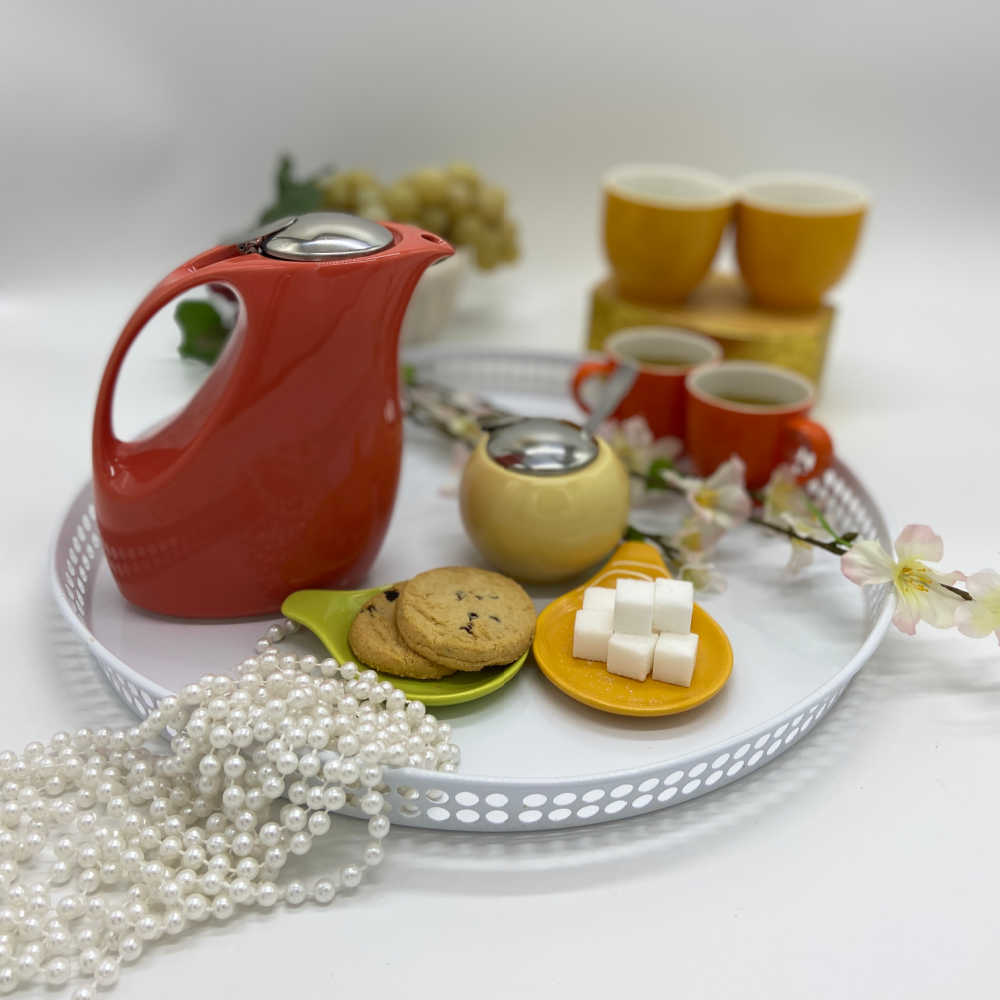
Welcome to the wonderful world of tea!
This is a beginner’s introduction to all the types of tea you might run across in your tea adventures. Don’t worry, we won’t drown you in information (or tea samples!) This is a basic overview of the different tea types and popular non-tea alternatives.
Tea is the second most consumed drink on the planet next to water. China and Japan are the main producers of tea. These two countries alone produce more than 1,500 varieties of tea. All true tea is from the Camellia Sinensis plant, an evergreen which grows up to 2 meters high.
Many people also enjoy delicious and healthy herbal teas made from dried fruits and other herbs. These are more accurately called tisanes and contain no actual tea. Tisanes are not a true tea but they are called teas simply for convenience.
There are many methods for brewing tea using either tea bags or loose leaf tea. If you choose to use a loose leaf tea, you may need to invest in a quality tea steeper. Regardless, the absolute most important starting point is a high quality tea.
This guide will help introduce you to the world of luxury teas whether you’re brand new to tea, or just looking to step up your tea game. The tea families covered below are organized by their oxidation level, from lowest (white tea) to highest (black tea). There’s also a section on non-caffeinated tisanes that are often thought of as teas. Continue and enjoy!
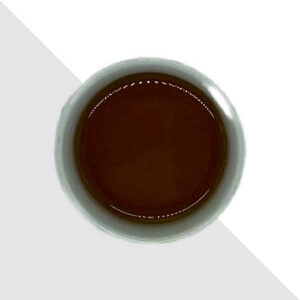
White Tea
What is White Tea?
White tea is one of the most delicately flavoured teas available. It consists of young tea leaves that are plucked from the plant and immediately dried. The tea leaves undergoe no further processing. It is also common to use immature leaves where the bud has not fully opened. The leaves are either naturally dried, or fans are used to remove their moisture. Of all teas, white teas undergo the least amount of processing and handling. White teas are delicate, extremely refreshing and contain the lowest amounts of caffeine.
A very popular white tea from Cupper’s is our Numi Orange Spice White Tea. Numi also has their Numi White Rose Tea, which is fast becoming popular too!
How to Brew White Tea
White tea is naturally more delicately flavoured than a black or herbal tea. This means it steeps better at a lower temperature and with a shorter steeping time. We recommend using 80°C water and pouring it over the tea bag. You can measure the temperature of your water with a steaming thermometre. You will only want to steep your white tea for 2-3 minutes, otherwise it will become bitter.
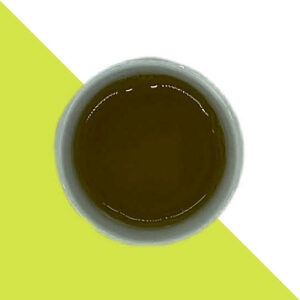
Green Tea
What is Green Tea?
Green teas are not from different tea plants. Rather, green teas differ from other teas only in the way processing happens to the leaves. Freshly picked tea leaves are dehydrated to prevent any possibility of oxidation. This increases the “green” characteristics of the tea. Green teas have a wide variety of flavours and intensity. They generally are more nuanced and delicate than black teas.
Cupper’s has a wide variety of green teas from different tea regions. Rishi Matcha Super Green Tea has always been a favourite. We also carry a wide selection of green teas with our newest made-in-Canada tea line, M21 Luxury Teas. Our favourite (so far!) is the M21 Maple Green Tea. Very Canadian, indeed!
How to Brew Green Tea
Green tea, like white tea, needs steeping at a lower temperature than darker teas. Use hot water well below the boiling point, at around 75-80°C, to avoid scalding the tea leaves. The steeping time on a green tea should be 3 minutes or less to avoid becoming bitter.
Matcha green tea is a powdered green tea whisked into a small amount of hot water with a bamboo whisk. It is the tea powder commonly used in Japanese tea ceremonies. These ceremonies are a very formal and very stylized way of preparing and serving tea. These tea ceremonies have a history going back centuries. Matcha green tea has a strong concentrated flavour. It is also commonly added into smoothies and used in baking.
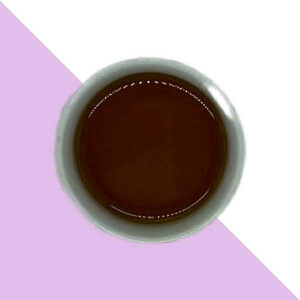
Oolong Tea
What is Oolong Tea?
Oolong teas are processed according to a three century old tradition. Oolong tea leaves undergo partial oxidation, and then get twisted or rolled. Some oolong teas have a slightly sweet floral aroma like those of green tea. Other oolong teas have a woodier, fruity or caramelized note. The notes are dependant on the different levels of oxidation in the processed leaves.
Wulong is one style of oolong tea, meaning ‘Black Dragon’. This refers to the black snakes that coil around the branches of the tea trees. Another common oolong tea style is Ti Kuan Yin, or ‘Iron Goddess’. Iron Goddess oolong tea is often referred to as the tea of poets.
Oolong teas are more labour intensive than other teas and as a result often cost more. They also have unique tastes somewhere between green and black tea. A good oolong tea can be steeped more than once.
Try our Rishi Iron Goddess of Mercy Oolong Loose Tea. Rishi produces some of the best teas in the world, and this is no exception. We’re very happy to have this lovely oolong back in stock!
How to Brew Oolong Tea
Oolong tea is a bit more hardy than green or white tea, so brew it with 90°C water. Oolong leaves will not scald in hot water as easily as green or white tea leaves will. Steep your oolong tea for 4-5 minutes for the best flavour results.
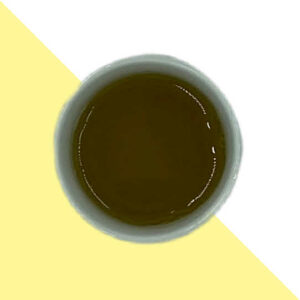
Yellow Tea
What is Yellow Tea?
Yellow teas are rarer than the other families of tea. Yellow teas undergo a slight post-oxidation process. This happens when the leaves are smothering with cloth or paper while still warm from the drier. The smothering produces a slight enzymatic oxidation. This gives the both tea leaves and the liquid obtained from them a yellowish hue.
We don’t currently carry yellow teas at Cupper’s Coffee & Tea. This is a combination of the rarity of yellow tea, the cost, and the low demand.
How to Brew Yellow Tea
As this is a more delicate style of tea, brew yellow tea in 75°C to 80°C water. Do not steep yellow tea for longer than 3 minutes as the tea leaves will begin to release too much tannin. Too much tannin increases the bitterness of the tea. This has a harsh effect on the otherwise pleasant flavour profile.
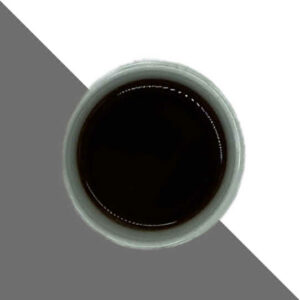
Black Tea
What is a Black Tea?
Black teas are the most consumed teas throughout the world. They undergo a more rigorous oxidation than other teas. Black teas also have higher levels of tannins. It’s these tannins that add the darker colour and deep, rich flavours that tea drinkers enjoy.
Chai teas are part of the black tea family. Chai is typically a black tea with added spices. Some black teas are also called red teas, referring to the copper colour of the infusion they produce. (Note: Red tea may also refer to rooibos tea, which is actually a herbal tisane.)
Black tea also generally pair well with different flavours, including honey, lemon, berries, and other sweeteners. Black teas also make delicious iced tea drinks. Many flavoured teas are black teas blended with other natural ingredients or flavours.
There are many styles of black tea to try. Most of them differ in the level of fermentation and aging process, which changes the flavours of the tea. By far, the number one most popular tea at Cupper’s (hands down!) is Rishi Earl Grey. We also try to have a wide variety of black tea styles at Cupper’s. These amazing teas include several from our different tea lines. Try our standard Numi Chinese Breakfast Tea, or Rishi English Breakfast Tea. For something new, our Canadian M21 Luxury Tea line has a huge selection of black teas, including some unique blends. Check out their M21 Boysenberry Tea, or their M21 Turmeric Ginger Peach Tea!
How to Brew Black Tea
Black tea is a fully oxidized tea that can stand up to hot temperatures. It is not as delicate as white or green tea. Use 90°C – 95°C water to brew a cup or pot of black tea. Steep the tea for up to 5 minutes for the fullest flavour. Don’t steep your black tea longer than 5 minutes as it will start to become bitter as the tannins over-extract.
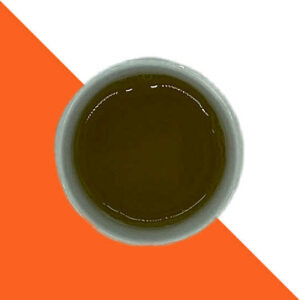
Pu'erh Tea
What is Pu’erh Tea?
The Pu’erh style of tea originated in the Yunnan Province of China. There, tea is harvested from ancient trees growing in the wild. Then it’s compressed and readied for transportation. This style of tea undergoes fermentation as well as oxidation. As a result they have more earthy flavours. Chinese medicine practitioners have recommended Pu’erh teas for centuries. They focus on pu’erh tea’s digestive properties and cleansing action.
We have a very popular Pu’erh tea at Cupper’s, one that we frequently use in our tea lattes. Check out our Numi Chocolate Pu-erh. If you ask the baristas nicely, they’ll tell you how to make your own tea latte with it!
How to Brew Pu’erh Tea
Pu’erh tea is a style of black tea, so the steeping instructions are the same. Steep the tea leaves or bags for approximately 4-5 minutes in 90°C – 95°C water. Be careful not to over-steep the tea to avoid it becoming bitter and tannic.
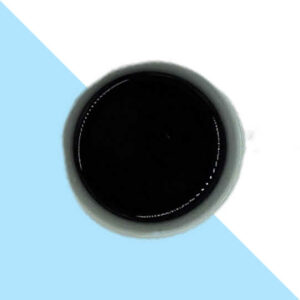
Herbal Teas &
Herbal Tisanes
What are Herbal Teas or Herbal Tisanes?
Herbal teas are made using herbs, flowers, fruits and almost anything in between. Anything, that is, except for actual tea itself. Herbal teas can be refreshing, healthful and delicious. Much depends on the quality and freshness of the ingredients. In general, prepare herbal teas the same way you make a regular cup of tea. Steep it in hot water and strain out the tea afterwards. Herbal tea blends are extremely diverse as there is such a wide variety of ingredients. Each herbal tea benefits from different steep temperatures and times.
Cupper’s Coffee & Tea carries a wide assortment of loose and bagged herbal teas. Two of Cupper’s most popular herbal tea blends are Rishi Summer Berry Tea and Rishi Unity Tea. Check out our Summer Berry Iced Tea for a few iced tea ideas. And our newest Canadian tea line is our M21 Luxury Teas, who have a wide variety of herbal teas. Try the M21 Cold N Flu Tea when you’re feeling the sniffles, or the M21 Digestif Tea for a relaxing post-meal sip.
How to Brew Herbal Tea
Usually you can brew herbal teas at high temperatures up to 95°C without scalding the tea. An extra bonus with herbal teas is they can steep as long as you want. The infusion will continue to get stronger and more flavourful as it steeps. Unlike black teas, it won’t get more bitter as there are no tannins as in regular teas. Herbal teas are excellent both hot and iced. They’re also delicious both sweetened and unsweetened.
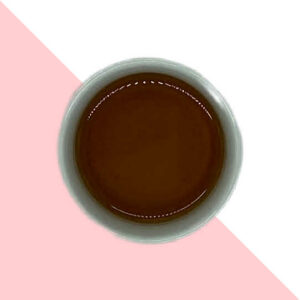
Rooibos Tea
What is Rooibos Tea?
You can try our Red Espresso sold as a beverage in-store at Cupper’s. You can also go with the straight-forward traditional Numi Rooibos Tea. Or you could dress it up with one of our new Canada based teas from M21 Luxury Tea. Try the M21 Bourbon Street Vanilla Tea, which has become a huge customer favourite.
How to Brew Rooibos Tea
Rooibos tea can be brewed at up to 95°C. We recommend that you steep your rooibos tea for 4 minutes. If you enjoy a more intense flavour steep your rooibos for even longer. You won’t lose any quality or cause the tea to taste too bitter.

Yerba Mate Tea
What is Yerba Mate Tea?
Yerba Mate is a South American holly plant. Despite not being an actual tea, it is a naturally caffeinated beverage. Traditionally it’s consumed from a bombilla straw out of a hollowed-out gourd. Yerba Mate is sometimes called the ‘drink of friendship’. Family and friends would often pass around and share the tea gourd. We love the relationship building that comes with the culture of Yerba Mate. There’s a lot to learn about this remarkable beverage. Read our post What is Yerba Mate? for more information. And if you’re interested in getting truly traditional, you can learn How to Cure a Yerba Mate to ready your own yerba gourd!
How to Brew Yerba Mate Tea
As mentioned, yerba mate tea is traditionally served in a hollowed out gourd. The gourd is the actual yerba. The special bombilla straw has a small spoon-shaped filter at the bottom of it. The filter strains out any leaves or fruit as you drink it. At Cupper’s Coffee & Tea we have a complete range of traditional yerbas made of naturally grown gourds, and more modern versions of leather and glass. We also have a selection of bombillas for you to choose your favourite from.
To start, steep yerba mate tea in 90°C water for 4-7 minutes. Steep even longer if you want a deeper, bolder flavour. As you drink the tea, keep adding water to it and continue to steep it. It can be steeped as you drink it all day!
How To Select The Right Tea
Congratulations! You’re now a beginning tea virtuoso! Now that you know the difference between the main types of tea, should you try them all? How will you know what you like the best? If you want to try them all, we sure aren’t going to judge… we’d be right there, too!
No matter what, buying a high grade, premium quality tea will make a huge difference in your tea enjoyment.
Frequently Asked Questions
What are the health benefits of tea?
Different teas may have many health benefits. Many cultures have use teas to treat a variety of conditions. We recommend consulting a doctor before treating any medical conditions, even with tea.
Do the main types of tea cause dehydration?
Caffeinated teas may act as a diuretic and increase your frequency of urination. But the caffeine content in teas is fairly low and studies show it is unlikely to cause dehydration. The simple solution? Make sure you’re also hydrating with plain water.
What is rooibos tea good for?
Rooibos tea is an antioxidant rich tea that is naturally caffeine free. It has a bold flavour and is often used as a substitute for black tea. We really our Numi Rooibos Chai.
Is it OK to drink rooibos tea everyday?
Yes. Rooibos tea is safe to drink daily. It is a natural and caffeine free alternative to black tea or coffee.
What is black tea good for?
Black tea contains antioxidants and has some caffeine as well. We recommend having a cup in the late afternoon. That’s perfect if you need a gentle pick-me-up and have hit your coffee limit for the day.
What is the difference between black tea and regular tea?
There is no such thing as a simple ‘regular’ tea versus a black tea, as both actually are teas. All true tea is the Camellia Sinensis plant. Black tea is a style of tea that is fully oxidized before steaming or drying.
Why is tea called Orange Pekoe?
Orange Pekoe refers to the grading of leaf size. A true Orange Pekoe tea is a basic, medium-grade black tea consisting of many whole tea leaves.
Are Earl Grey and Orange Pekoe the same thing?
Earl Grey and Orange Pekoe are not the same thing. Earl Grey tea is a black tea infused with bergamot, a type of citrus fruit native to Italy. Orange Pekoe is an unflavoured black tea. The name Orange Pekoe is actually in reference to the size and grade of the tea leaf. Fun fact: Our #1 best selling tea is our Rishi Earl Grey.
What does Orange Pekoe Tea taste like?
Orange Pekoe tea is a straight black tea with no added flavours. Usually Orange Pekoe is bright and coppery with a rich maltiness and hints of oak.
What makes it Gunpowder Green Tea?
Gunpowder green tea is rolled into small pearls in a large wok during processing. This gives it the look of a coarse powder, hence the term Gunpowder Green. Try our Numi Gunpowder Green to see what this looks like.
Is gunpowder green tea strong?
Because of small size of the ‘gunpowder’ pearls in the tea, it is said to retain flavour longer than a regular green tea. Yet this doesn’t mean that it’s necessarily “stronger” in flavour. Try our Numi Gunpowder Green to see what you think of it.
How do you make kouridashi tea?
Kouridashi tea brewing is a method of brewing cold tea. Rather than steeping tea in hot water, use only ice. Let it melt and steep for a longer period of time. A steep for 8-24 hours is common. We also cold-infuse tea for some of our iced tea drinks. Check out our blog on making kouridashi cold brewed tea!
How do you make sun tea?
Make sun tea by using a large clear jar or pitcher so the sun does the work as the tea cold steeps. Fill the container with cold water and add the tea. We recommend any of our fruity teas, like M21 Berry Berry Tea, or M21 Strawberry Kiwi Tea. Then cover the container, and set it in direct sun for 6-8 hours. Remove the tea from the container and refrigerate. Pour, and enjoy!

